#dan considine
Explore tagged Tumblr posts
Text

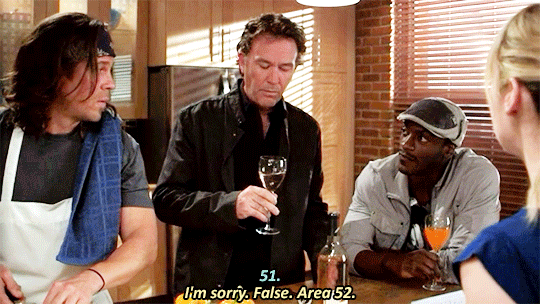
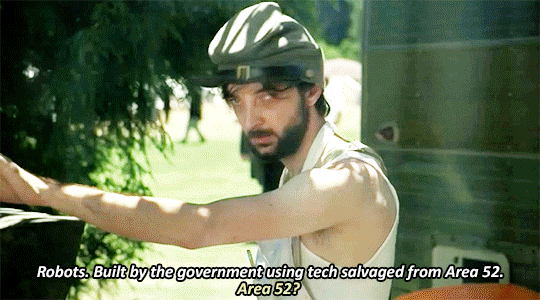
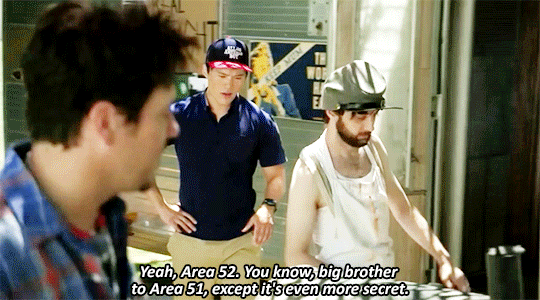
Leverage 2x5 - "The Three Days of the Hunter Job"
The Librarians 4x9 - "And a Town Called Feud"
#christian kane#leverage#eliot spencer#alec hardison#aldis hodge#parker#beth riesgraf#nathan ford#timothy hutton#the librarians#jake stone#ezekiel jones#john harlan kim#griz#dan considine
503 notes
·
View notes
Text
Le Celtic a fait jouer ses muscles à St Johnstone pour s'assurer que son avance de neuf points sur les Rangers au sommet de la Premiership reste intacte.Les Light Blues poursuivants ont battu le comté de Ross 2-1 à Ibrox samedi, mais les champions ont bien géré la pression à McDiarmid Park, enregistrant une victoire convaincante 4-1.Premiership écossaise: les Rangers remportent une victoire serrée et Aberdeen rebonditEn savoir plusLe défenseur des Saints Andrew Considine a transformé un centre de Kyogo Furuhashi dans son propre filet à la 13e minute et l'attaquant japonais s'est marqué au milieu de la première mi-temps, avant que l'ailier Drey Wright ne retire un but trois minutes plus tard.Le milieu de terrain Aaron Mooy a rétabli l'avance de deux buts du Celtic à la 38e minute avec Considine - apparaissant dans son 600e match de club - expulsé par l'arbitre David Dickinson dans le temps additionnel pour un tir sur Oh Hyeon-gyu, avec son compatriote remplaçant David Turnbull ajoutant le quatrième de le coup franc qui en résulte.Les champions d'Ange Postecoglou ont perdu une fois en 25 matches de championnat cette saison et ont de nouveau semblé être une équipe formidable.La victoire 2-0 de St Johnstone en milieu de semaine à Motherwell était leur première victoire en huit matchs, mais peu de choses étaient attendues contre les hommes de Parkhead.James Brown, Tony Gallacher, Graham Carey et Connor McLennan sont entrés dans la formation de l'équipe locale tandis que Postecoglou n'a fait qu'un seul changement, Mooy remplaçant Matt O'Riley au milieu de terrain pour le coup d'envoi de midi.L'équipe locale s'est battue pour prendre pied tôt dans le match, mais les Hoops ont lentement pris le contrôle et ont pris la tête lorsque Furuhashi a couru sur une passe de Mooy. Dès la signature, sa tentative de balle vers ses coéquipiers japonais Daizen Maeda et Reo Hatate a été transformée dans son propre filet à bout portant par l'impuissant Considine.Le premier coup porté à la conviction de l'équipe de Perth a été aggravé à la 22e minute lorsque Furuhashi a tiré haut devant Remi Matthews après une longue passe de Mooy – qui avait un bon match – et un centre de Jota.ignorer la promotion de la newsletterInscrivez-vous pour Football QuotidienNewsletter quotidienne gratuiteCommencez vos soirées avec le regard du Guardian sur le monde du football
0 notes
Photo
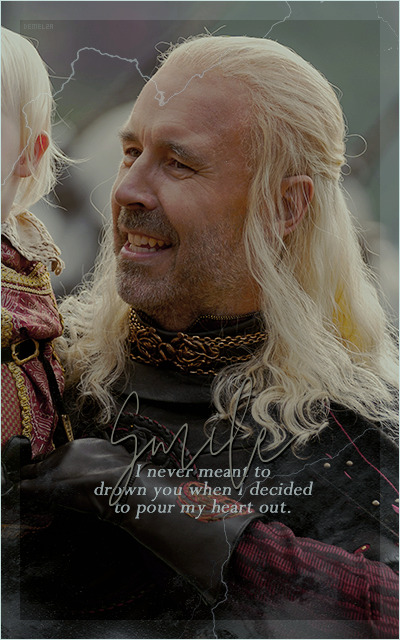
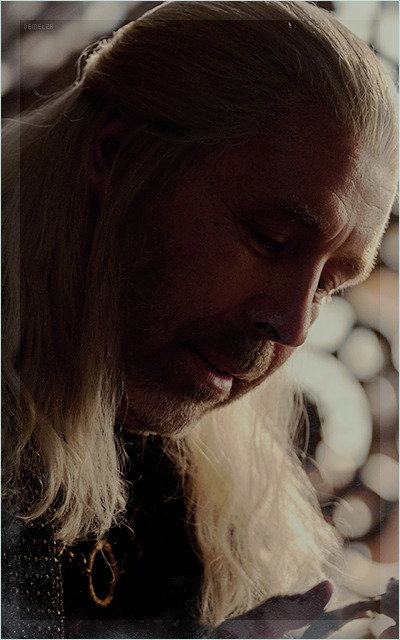
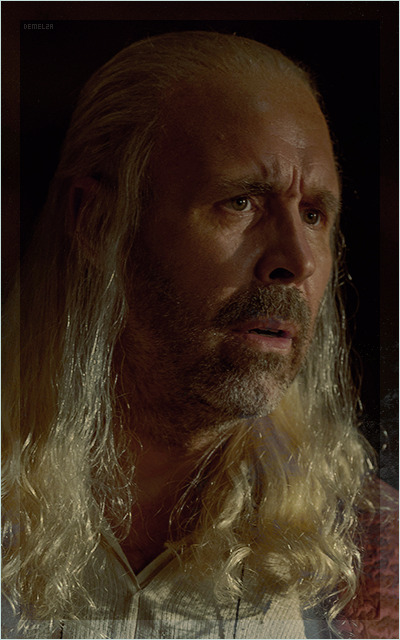
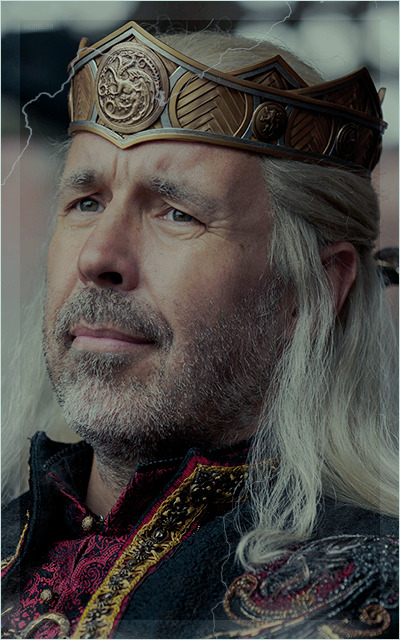
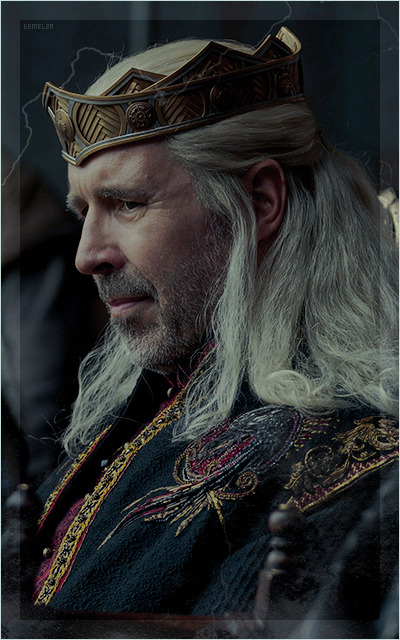
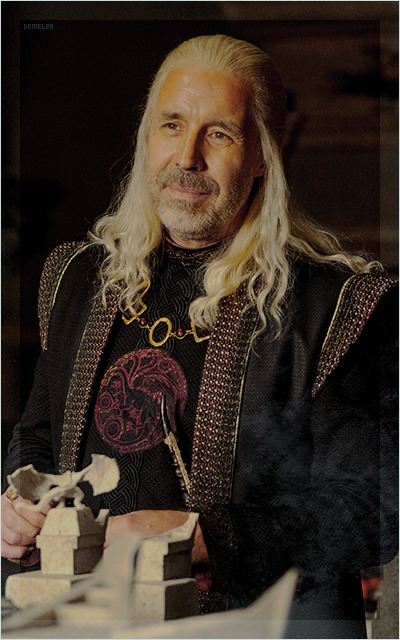
Paddy Considine est Viserys Targaryen dans House of the dragon.
Avatars également sur @fcressourcesrp
#paddy considine#paddy considine avatars#avatars#house of the dragon#gotedit#fcressourcesrp#house targaryen#targaryen#viserys targaryen
24 notes
·
View notes
Note
what was the ableist joke?
(we're talking about this post and the guy who asked stede to sell him parts of the hostage before getting chased off by geraldo)
the whole character is the ableist joke, imo. altho idk if ableist is the right word for it but putting an actor with a facial deformity for a quick little "stede is a fish out of water in a gruesome and violent world" bit is... a choice they made for sure. he's only there for one scene that serves purely as quick comedy (you could cut his bit out entirely and skip straight to geraldo approaching stede, it adds nothing to the plot), so his visual deformity becomes that guy's defining character trait and also part of the comedy of that scene.
i know that scene would play out the same if they cast a different person in that role, and all the guy is doing is just delivering his lines, but when you have disabled or physically deformed actors, putting them in certain roles changes the portrayal of their disability/deformity. casting that actor changed the scene so it wasn't only, "stede is out of his depth, pirates are incredibly violent," but there was also, "and look at this guy with the weird face! he's weird and violent!"
like, if they put matthew maher (black pete) in that role, the scene wouldve read like "isn't it funny that this creepy and violent guy who wants to 'disassemble' the hostage has a lisp?" but because black pete is a recurring background character who has his own plotline and character development, and because his lisp is never commented on or made a joke of, matthew maher's lisp is never the butt of the joke.
also the actor (Dan Considine) is literally credited on imdb as "Ghoulish Man" so like, yeah, the guy's facial deformity is part of the gag here. not a great look to describe a man with a facial deformity as ghoulish
#jokes abt deformities are ableist right? that falls under the ableism umbrella?#ofmd#our flag means death#og#the gentleman pirate#s1e03#ask#anon#mine#ofmd crit#txt#like they couldve given that actor any other role. he couldve been one of the spanish jackie husbands or something#but he gets called ''freak'' by geraldo and then we never see him again
16 notes
·
View notes
Photo










The Bourne Ultimatum (2007)
Director - Paul Greengrass, Cinematography - Oliver Wood
“Listen, people - do you have any idea who you’re dealing with? This is Jason Bourne. You are nine hours behind the toughest target you have ever tracked. Now I want everyone to sit down, strap in, and turn on all you’ve got. That would mean now.”
#scenesandscreens#the bourne ultimatum#matt damon#julia stiles#david strathairn#scott glenn#paddy considine#edgar ramírez#daniel brühl#albert finney#joan allen#tom gallop#corey johnson#joey ansah#colin stinton#dan fredenburgh#lucy liemann#paul greengrass
90 notes
·
View notes
Text
"Matt Smith and Milly Alcock receive Critics Choice Nominations (while Paddy Considine and Emma D’Arcy are snubbed)," Dan Selcke from Winter is coming dot net.
Both Paddy Considine and Emma D’Arcy should have received the nomination nod for best actor. Both actors acted superbly. For Paddy it was necessary because he will not reappear next season.
This snobbery from these organizations and critics need to stop. Favoritism has no place and only outstanding acting needs consideration. I'm peeved to the max.
#nobs#critics choice awards#emma darcy#house of the dragon#Paddy Considine#queen rhaenyra#hotd#rhaenrya targaryen
11 notes
·
View notes
Text
Gobshite Viserys is real and quite the singer
if you've listened to Paddy's band Riding The Low before, it's good to blast it again

Riding the Low. Left to right: Dan “Skelegog” Baker, Chris “Butch Mystique” Baldwin, Paddy “Gobshite Rambo” Considine, Justin “J-Rock” Chambers, Richard “Tactile Sasquatch” Eaton.
11 notes
·
View notes
Text
Rolling Stone Ranks The Top 100 Metal Albums of All-Time
Rolling Stone Ranks The Top 100 Metal Albums of All-Time
Rolling Stone has released its list of the top 100 Metal Albums of all time, and it will surely spark some ire among fans. Curated by a list of the who’s who of proper rock and metal journalists such as Christopher R. Weingarten, Tom Beaujour, Hank Shteamer, Kim Kelly, Steve Smith, Brittany Spanos, Suzy Exposito, Richard Bienstock, Kory Grow, Dan Epstein, J.D. Considine, Andy Greene, Rob…
View On WordPress
#Adrien Begrand#Andy Greene#Black Sabbath#Brittany Spanos#Christopher R. Weingarten#Dan Epstein#Hank Shteamer#Ian Christe#Iron Maiden#J.D. Considine#Judas Priest#Kim Kelly#Kory Grow#Megadeth#Metallica#Morbid Angel#Motorhead#Ozzy Osbourne#Pantera#Richard Bienstock#Rob Sheffield#Rolling Stone#Rolling Stone Magazine#Slayer#Slipknot#Steve Smith#Suzy Exposito#The Top 100 Metal Albums of All-Time#Tom Beaujour
0 notes
Text
Under Capricorn (Alfred Hitchcock, 1949)
Antaño reputada una de las mejores películas de Hitchcock —la que Cahiers du Cinéma incluye en 1958 entre las doce más importantes de la Historia del Cine— y una de las más citadas. Under capricorn (1949) es hoy una película olvidada hasta por los más entusiastas hitchcockianos. El propio Hitchcock —sin duda el cineasta que más trabajo ha ahorrado a sus detractores, y no, como su más directo competidor en este sentido, Jean-Luc Godard, por afán de provocar, sino por una autoexigencia y un sentido crítico realmente excesivos— se ocupó de enfriar el entusiasmo que Truffaut —como Rohmer, Chabrol, Rivette y tantos otros— sentía por el film antes de su célebre entrevista.
Hay que reconocer, aunque sólo sea por una vez, que el autor se acercó más a la verdad que sus admiradores, que fue mejor crítico que los críticos más sensibles de la época, y que Under Capricorn es uno de los honrosos fracasos que puntúan la carrera de Hitchcock entre 1941 y 1956 —como Recuerda, El proceso Paradine o Yo confieso, por ejemplo—, films ambiciosos y a menudo audaces, con secuencias magistrales o conmovedoras, pero fallidos, menos satisfactorios en conjunto que otros más modestos, decididamente «menores» incluso —como Pánico en la escena—, pero más conseguidos, a su nivel, menos perjudicados por ciertos errores que malogran obras que pudieron o debieron ser magníficas.
El primer obstáculo que el propio Hitchcock interpuso al éxito de Atormentada es un guión excesivamente difuso e inseguro a partir de un argumento que sin duda encerraba posibilidades y no carente de atractivo —un poco en la línea de Cumbres borrascosas, y por tanto de Rebeca, con algunos elementos de Gaslight (Luz que agoniza, 1944) de Cukor, entre ellos la actriz principal—, que enlaza —si no las recuerda mal— con The Ring, Downhill (1927) y The Manxman (1929), además de los otros dos films en que dirigió a Ingrid Bergman, y anuncia I confess (1953), Hitchcock y sus colaboradores parecen haber sido incapaces de concentrar la acción suficientemente y de exponerla con la necesaria fuerza dramática. Los personajes permanecen demasiado tiempo envueltos en la confusión, sujetos a voluntades ajenas de inexplicable poderío o víctimas de malentendidos que nadie intenta aclarar, por lo que Lady Henrietta Considine (Ingrid Bergman, más bella cuando está enferma que cuando recobra la salud y el juicio) parece demasiado crédula y pasiva. Sam Flusky (Joseph Cotten) un marido excesivamente tosco y derrotista, el ama de llaves Milly (Margaret Leighton) una grotesca encarnación de la maldad gratuita y Charles Adare (Michael Wilding) un estúpido petimetre sin gracia ni inteligencia que puedan hacerle digno de la función que el guión le asigna.
El segundo error, mayúsculo, no hace sino agravar el primero: la elección de actores —salvo Ingrid Bergman, por supuesto, y tal vez Margaret Leighton, aunque ésta intente en exceso emular a Judith Anderson en Rebeca, sin resultar ni la mitad de amenazadora— es singularmente desafortunada: ni Joseph Cotten —demasiado soso y bovino, merece que las cosas le salgan mal, como en El cuarto mandamiento, Duelo al sol, Niágara, El último atardecer— ni Michael Wilding —débil y superficial, gesticulando como ningún otro intérprete de Hitchcock, sin asomo del humor de que hace gala en Pánico en la escena (1949)— dan la talla necesaria para hacer creíbles y emocionantes a dos personajes de melodrama como los que les ha tocado encarnar, y que hubieran requerido el talento, la ambigüedad y la presencia de, respectivamente, James Mason —pienso en su actuación en The Reckless Moment de Max Ophuls— y Cary Grant —en la línea de pícaro vago que tan brillantemente reveló en Sospecha (1941), con un poco de la dureza cruel que Hitch supo extraer de él en Encadenados (1946) para las escenas en que el personaje de Adare anuncia el de Sean Connery en Marnie (1964)—, por ejemplo.
Tercera equivocación, causa probable de la primera: la desmedida afición de Hitchcock —tal vez producto de culpables lecturas juveniles y de su formación en los jesuitas, primero, y en el cine mudo, después— al melodrama victoriano de amores imposibles entre aristócratas y mozos de cuadra, que sin duda le impulsó, consciente de que tales conflictos se habían hecho anacrónicos, a abordar —por tercera, si no me equivoco, y desde luego última vez en su carrera— algo que le pega tan poco como el «film de época». No es que Hitchcock afloje el ritmo narrativo en aras de una amorosa recreación del ambiente decimonónico o preste excesiva atención al decorado y el vestuario, pero situar la acción de un film de «suspense» en 1831 no contribuye a acercarnos a unos personajes que además de vivir en Australia, eran de por sí bastante inverosímiles sobre el papel, sin que los actores logren hacérnoslos más próximos o comprensibles.
Estos tres fallos imposibilitarían ya, de entrada, la identificación del espectador con cualquiera de los protagonistas del drama que parece no sólo una de las características del cine hitchcockiano sino un requisito casi indispensable para que se produzca esa forma de tensión que se ha dado en llamar «suspense». Por si fuera poco, Hitchcock se dejó llevar de su entusiasmo por el plano-secuencia, con el que acababa de experimentar en Rope (1948), y cometió un cuarto error, tal vez el más inexplicable e imperdonable de los que impiden que Under Capricorn llegue a ser la gran película que pudo ser y a ratos es: subordinó los movimientos —o la absurda falta de ellos— de los actores a los —con frecuencia prodigiosos, hasta sublimes en sí mismos— de la cámara, con lo que a menudo echamos de menos a un personaje, que está en la escena pero fuera de cuadro, cuyas reacciones desearíamos conocer, y cuya ausencia sólo sirve para que Hitchcock no tenga que interrumpir el largo plano que está haciendo con un contraplano. Triste ejemplo —único en la obra de Hitchcock— de lo que sucede cuando los medios se convierten en un fin y, por ello, no conducen a nada.
Pero si la maestría, la autoexigencia y la lucidez habituales en Hitchcock incitan a la severidad y no invitan a la indulgencia ante la decepción, sería también injusto no señalar más que los defectos de un film en el que están inextricablemente unidos a otros tantos aciertos.
Resulta, así, que cuando la cámara se cierne implacablemente —durante seis u ocho minutos— sobre el rostro angustiado de Ingrid Bergman para acosarla hasta extraer de ella una penosa confesión, nada importa que se nos oculte forzadamente a Michael Wilding— que nos tiene sin cuidado, a fin de cuentas—, y sí que se roce la intensidad y el impudor con que Rossellini sondeó la mirada de esa misma actriz en Stromboli, terra di Dio (1949), Europa' 51 (1952), Viaggio in Italia (1953) y Die Angst/La paura/Non credo piú all'amore (1954); que la primera aparición de Lady Henrietta —pálida, ajada, descalza, con algo de cadáver recién exhumado— es escalofriante; que a veces nos creemos efectivamente transportados a un mundo de amor fou y pasiones reprimidas digno de Emily Brontë o el George Du Maurier de Peter Ibbetson y Trilby, como cuando Hitchcock se decide, por fin, a poner todas sus cartas sobre el tapete y nos arrastra con sus personajes en un furioso torbellino de confesiones, mentiras, sacrificios y celos asesinos que hace, durante los quince o veinte minutos finales, que por fin nos creamos unos amores que hasta entonces no existían más que en la mente de los autores o en las páginas del guión, pero que ahora, en virtud de la fuerza misma de la narración, llevada a un ritmo vertiginoso y sepultada definitivamente en las arenas movedizas de la paradoja, se nos antojan evidentes... qué digo evidentes, ¡ardientes!
Miguel Marías
Dirigido por 76 (Octubre 1980)
• ────── ✾ ────── • • ────── ✾ ────── • • ────── ✾ ────── •
Para quien piensa, como yo, que Alfred Hitchcock es (como cineasta, no me refiero al individuo así llamado en la vida real; por eso empleo el presente) uno de los grandes románticos, Under Capricorn ha de ser, por fuerza, una de sus películas más características y logradas; lo cierto es que nunca —ni en su estreno ni en reposiciones ulteriores— ha tenido éxito, pero en los últimos tiempos no goza siquiera del prestigio que tuvo en los años 50 entre los entonces muy contados, todavía incipientes, defensores del cineasta, considerados por lo general como unos locos (Truffaut, Rohmer, Chabrol, Rivette, Godard, Resnais eran sus nombres).
Cierto es que por entonces Hitchcock no había realizado su asombrosa serie de obras maestras consecutivas (desde Rear Window en 1954 hasta... ahí cada cual tiene su criterio: para unos, la "racha" termina con Psycho, otros la prolongan una, dos, tres, hasta cuatro películas más), y por tanto estaba por hacer alguna de las mejores, pero creo que, más que eso, lo que sucede es que quienes han visto Under Capricorn muerto Hitchcock tienen una imagen de su obra más cerrada que quienes la pudieron contemplar antes de su periodo Paramount y su periodo Universal. En 1949 Hitchcock tenía no muy lejanas varias películas "de época", sin ir más lejos la fallida Jamaica Inn (1939), mientras que para 1976 (la fecha de su último largometraje, Family Plot) había descartado por completo tal tentación desde hacía casi treinta años, es decir, desde Under Capricorn precisamente... escarmentado por su fracaso.
El caso es que en 1949 Under Capricorn era una película algo insólita, inusual, en la filmografía hitchcockiana; hoy parece una absoluta rareza, al menos para el que desconozca su etapa muda, y por tanto ignore que sus primeras películas no tenían nada de policiacas, ni siquiera crímenes o culpables (falsos o verdaderos), sino que eran, puestos a ubicarlas en algún género, melodramas, historias de amor, de pasión y celos, de deseo frustrado y obstinado. Por tanto, Under Capricorn representa algo así como un retorno a los orígenes, una última tentativa de casi prescindir del marco, el contexto o el ingrediente, como se quiera llamar, policiaco-criminal, es decir, el nicho genérico del thriller en el que había descubierto, casi por casualidad, la fórmula mágica, la receta del éxito, la clave de su supervivencia como autor cinematográfico. He tratado de mostrar esa raíz y su evolución en términos de lo que ha venido a llamarse suspense en el artículo más largo que he escrito en mi vida acerca de Hitchcock, incluido en un volumen colectivo publicado por la Fundación Municipal de Oviedo en 1989 y que supongo será hoy inencontrable. No puedo, pues, ni tratar de sintetizarlo aquí, pero Under Capricorn es, junto con Vertigo y Marnie, la última gran historia de amor (aunque, marginalmente, también lo sean North by Northwest y Topaz) que logró llevar Hitchcock a la pantalla sin apenas disimuladoras apoyaturas externas, es decir con una intriga de misterio menos importante que la afectiva.
Under Capricorn es la incursión más profunda (y ambigua o ambivalente) de Hitchcock en la figura del triángulo (y en eso prolonga su anterior película con Ingrid Bergman, Notorious), jugando con las apariencias en el enfrentamiento entre el rudo y rústico Joseph Cotten y el refinado y educado Michael Wilding. Contiene uno de los mayores "sustos" de toda su filmografía, y no faltan tensiones psicológicas ni elementos macabros, que sería injusto mencionar ante quien no la haya visto, pero el suspense básico es de carácter predominantemente amoroso, sentimental. Quizá sea la obra de Hitchcock más emparentable con el melodrama, y no faltan puntos de contacto con uno de los últimos rodados en Alemania por Detlef Sierck (más conocido como Douglas Sirk), también situado, curiosamente, en Australia, Zu neuen Ufern (1937).
La idea de una nueva vida —a veces una nueva personalidad, un nombre cambiado— en los antípodas implica siempre un pasado latente, que se trata de olvidar o, al menos, ocultar a los demás, pero que, como todo lo reprimido, pugna por reflotar a la superficie o corre el riesgo de ser deliberada o involuntariamente revelado. Esta tensión entre presente y pasado, entre traumas y deseo de felicidad, entre protección y libertad, es la clave de la variante del suspense que rige la dramaturgia y la narración en Under Capricorn, también experiencia o experimento final de Alfred Hitchcock en el terreno de los planos de larga duración con complicados movimientos de cámara, que yo tiendo a interpretar como un rebrote de su admiración por el Murnau mudo reactivado por los planos-secuencia de las primeras películas de Orson Welles (1941-1942) y otras dos que seguramente contempló con fascinación y algo de envidia quizá, Laura (1944) de Otto Preminger y Letter From An Unknown Woman (1948) de Max Ophuls. El primer ensayo fue, evidentemente, Notorious; el segundo, Rope; el tercero, Under Capricorn. Ni que decir tiene que su sistema habitual de fragmentación del espacio y el tiempo en multitud de planos breves aplicando el desarrollo hitchcockiano del "efecto Kuleshov" es más adecuado para el cine de intriga, misterio y suspense generalmente practicado por Hitchcock, mientras que el movimiento fluido y continuo de la cámara, a menudo independizado de la acción (que a veces sigue pero otras anticipa, desplazándose la mirada del cineasta en forma aparentemente arbitraria, pero reveladora de un conocimiento casi "divino" de lo que va a suceder) parece más apropiado para un melodrama en el que se debaten cuestiones como el destino, los impulsos irresistibles, la voluntad y el libre albedrío. El uso del color, que Hitchcock abordaba por segunda vez, revela igualmente su cara oculta de gran amante de la pintura, y sienta las bases de su ulterior y complejo empleo de los códigos cromáticos como vehículo subliminal de comunicación.
No es raro, pues, que los futuros cineastas que encabezaron la reivindicación de Hitchcock como algo más que un excelente técnico y un prodigioso artífice de ficciones escasamente preocupadas por la verosimilitud naturalista de lo narrado —lo que, en términos elogiosos pero algo peyorativos, resumía la fórmula "mago del suspense"—, como Rohmer y Chabrol, desde luego, pero también Truffaut, Godard o Rivette, encontraran en Under Capricorn una de sus piezas de convicción más impresionantes, ni que esta película haya ejercido notable influencia en sus obras posteriores (Jules et Jim, L'Histoire d'Adèle H. o Les Deux Anglaises et le Continent en la de Truffaut, La Femme infidèle o Juste avant la nuit en la de Chabrol, L’Anglaise et le Duc o Die Marquise von O... en la de Rohmer).
Miguel Marías
En “El universo de Alfred Hitchcock”. Editado por Notorius en 2006.
1 note
·
View note
Text
"CINDERELLA MAN" (2005) Review

"CINDERELLA MAN" (2005) Review When I had first learned about Ron Howard’s biopic about boxing champion James J. Braddock, I was very reluctant to see the film. In fact, I did not even bother to go see it. Instead, I merely dismissed "CINDERELLA MAN" as a ‘"SEABISCUIT" in the boxing ring’. After I finally saw the movie, I must admit that my original assessment stood.
”CINDERELLA MAN” and the 2003 Oscar nominated film, ”SEABISCUIT” seemed to have a lot in common. Both were released by Universal Pictures. Both films possessed a running time that lasted over two hours, both were sentimental stories that centered around a famous sports figure and both were set during the Great Depression. Unlike ”SEABISCUIT”, ”CINDERELLA MAN” told the story about a man – namely one James J. Braddock, an Irish-American boxer from New York and Bergen, New Jersey. The movie started out with Braddock (portrayed by Russell Crowe) as a boxing heavyweight contender in 1928, who had just won an important bout against another boxer named Tuffy Griffiths. But within five years, Braddock found himself as a has-been struggling to keep his family alive during the depths of the Depression, while working as longshoreman. Thanks to a last minute cancellation by another boxer, Braddock gets a second chance to fight but is put up against the number two contender in the world, Corn Griffin, by the promoters who see Braddock as nothing more than a punching bag. Braddock stuns the boxing experts and fans with a third round knockout of the formidable Griffin. After winning a few more bouts, Braddock ends facing boxing champ, Max Baer (Craig Bierko), for the heavyweight title in 1935. Despite the similarities between ”CINDERELLA MAN” and ”SEABISCUIT”, I must admit that I regret not seeing this film in the theaters. It turned out to be a lot better than I had expected. Director Ron Howard, along with screenwriters Cliff Hollingsworth and Akiva Goldsman, did an excellent job of chronicling Braddock’s boxing career at a time when he had been labeled a has-been by the sports media. The movie also featured some excellent fight sequences that came alive due to Howard’s direction, Crowe, Bierko, and the other actors who portrayed Braddock’s opponents. Although the movie’s main event was the championship fight between Braddock and Baer during the last thirty minutes, I was especially impressed by the sequence that featured Braddock’s fight against Art Lansky (Mark Simmons). In my opinion, most of the praise for these fight sequences belonged to cinematographer Salvatore Totino, and editors Daniel P. Hanley and Mike Hill (who both received Academy Award nominations for their work) for injecting the boxing sequences with rich atmosphere and effective editing. Ironically, the movie’s centerpiece – at least in my opinion – was its deception of the Depression. I understand that Howard had used the city of Toronto to serve as 1930s Manhattan and New Jersey. And judging from the results on the screen, he did an excellent job of utilizing not only the cast led by Crowe, but also the talents of production designer Wynn Thomas, Gordon Sim’s set decorations, Peter Grundy and Dan Yarhi’s art direction and Totino’s photography to send moviegoers back in time. There are certain scenes that really seemed to recapture the desperation and poverty of the Depression’s early years: *Braddock begs for money from the sports promoters and boxing managers at Madison Square Garden *Mae Braddock’s discovery of the gas man turning off the family’s heat *The Braddocks witness the desertion of a man from his wife and family *Braddock’s search for his friend, Mike Wilson (Paddy Considine), at a Hooverville in Central Park Howard and casting agents, Janet Hirshenson and Jane Jenkins, managed to gather an impressive group of cast members for the movie. The ironic thing is that despite the impressive display of talent on screen, hardly anyone gave what I would consider to be a memorable performance – save for one actor. Russell Crowe naturally gave an impressive, yet surprisingly likeable performance as James Braddock. Although I found his performance more than competent, I must say that I would not consider it to be one of his best roles. There was nothing really fascinating or complex about his Braddock. I suspect that screenwriters Hollingsworth and Goldsman could have made Braddock a more interesting character . . . and simply failed to rise to the occasion. I have to say the same about their portrayal of the boxer’s wife, Mae Braddock. Portrayed by Renee Zellweger, her Mae was a loving and supporting spouse, whose only kink in her personality revolved around her dislike of Braddock’s boxing. In fact, Zellweger’s Mae threatened to become a cliché of the countless number of women who end up as wives of men in dangerous professions. Thankfully, Zellweger managed to give an excellent performance and with Crowe, create a strong screen chemistry. Paul Giamatti received an Academy Award nomination for his portrayal of Braddock’s manager, Joe Gould. Many had assumed that Giamatti had received his nomination as a consolation prize for being passed over for his superb performance in ”SIDEWAYS”. After seeing his performance as Gould, I suspect they might be right. I am not saying that Giamatti gave a bad performance. He was excellent as Braddock’s enthusiastic and supportive manager. But there was nothing remarkable about it . . . or worthy of an Oscar nomination. If there is one performance that I found impressive, it was Paddy Considine’s portrayal of Mike Wilson, Braddock’s friend and co-worker at the New York docks. Considine’s Wilson was a former stockbroker ruined by the 1929 Crash, who was forced to become a menial laborer in order to survive. Although his plight seemed bad enough to generate sympathy, Considine did an excellent job of portraying the character’s bitterness and cynicism toward his situation, President Roosevelt’s ability to lead the country out of the Depression and the world itself. I hate to say this, but I feel that the wrong actor had received the Oscar nomination. God knows I am a big fan of Giamatti. But if it had been left up to me, Considine would have received that nomination. We finally come to Craig Bierko’s performance as Max Baer, champion boxer and Braddock’s final opponent in the movie. Baer’s character first makes his appearance in a championship fight against Primo Carnera, following Braddock’s surprising upset over Corn Griffin. From the start, he is portrayed as a brash and aggressive fighter who does not know when to quit. And it gets worse. Before I continue, I want to say that I have nothing against the actor who portrayed Baer. Like Crowe, Zellweger and Giamatti, Bierko had to do the best he could with the material given to him. And he did the best he could. Bierko, being an above-average actor, infused a great deal of energy and charisma into his portrayal of Baer. It seemed a shame that Howard’s direction, along with Hollingsworth and Goldman’s script forced Bierko to portray Baer as some kind of callous thug who felt no remorse for killing two other fighters in the ring and was not above needling Braddock at a Manhattan nightclub by making suggestive remarks about Mae. Baer’s son, Max Baer Jr. (”THE BEVERLY HILLIBILLIES”) had been naturally outraged by what he deemed was the movie’s false portrayal of the boxer. What the movie failed to convey was that Baer had only killed one man in the ring – Frankie Campbell – and had been so shaken up by the other man’s death that it affected his boxing career for several years. Nor did Baer ever make any suggestive remarks toward Mae Braddock. He also hugged and congratulated Braddock following the latter’s June 1935 victory. I really do not know why Howard thought it was necessary to turn Baer into a one-note villain. Someone claimed that the movie needed a nemesis for Braddock that seemed more solid than the vague notion of the Depression. If that is true, I believe that Howard and the movie’s screenwriters turned Baer into a villain for nothing. As far as I am concerned, the Great Depression made an effective and frightening nemesis for Braddock. This was brilliantly conveyed in Braddock’s bout with Art Lasky. At one point in this sequence, the New Jersey boxer seemed to be on the verge of defeat . . . until his memories of his family and how the Depression had affected them . . . urged him to a hard-won victory. Sequences like the Braddock-Lasky fight and Braddock’s search for Mike Wilson in the Central Park Hooverville made the Great Depression a more effective nemesis than the one-dimensional and crude behavior of a falsely portrayed Max Baer ever could. Despite the movie’s badly written portrayal of Baer, and slightly uninteresting major characters like James and Mae Braddock, and Joe Gould; ”CINDERELLA MAN” is still an excellent biopic that featured exciting boxing sequences. More importantly, it is one of the few Hollywood films that revealed an in-depth look into one of the country’s most traumatic periods – namely the Great Depression. Flawed or not, I believe that it is still worth watching.

#cinderella man#cinderella man 2005#james braddock#max baer#ron howard#russell crowe#renee zellweger#paul giamatti#craig bierko#great depression#boxing#paddy considine#rosemarie dewitt#ron canada#nicholas campbell#rance howard
2 notes
·
View notes
Text
Amaç ve niyet nedir bilmiyorum, ama insanın içini bir umut kaplıyor aşağıdaki şu haberle... Bu virüs birçok şeylere sebep olduğu gibi dünyanın “İslam” ı “İslamafobi” den çok ayrı bir bağlamda tefekkür edip idrak etmesine de zemin hazırlar mı?
İnşaÂllah... 🤲🏻
«Yeni tip koronavirüsün ortaya çıkmasıyla dünya hijyen kurallarını tekrar öğrenmeye başladı. Amerika'da yayın yapan haftalık Newsweek dergisi, bu konu üzerine çok konuşulacak bir haber hazırladı. Dergi, Hz. Muhammed'in (SAV) insanlığa tavsiye ettiği temizlik kurallarını hadisler üzerinden örneklendirerek gündeme getirdi.
Amerika'da yayın yapan haftalık dergi Newsweek, yeni tip koronavirüs ile ilgili bir haber hazırladı.
Amerika'daki Rice Üniversitesi Sosyoloji Bölümü'nde akademisyen olan Dr. Craig Considine imzalı "Yalnızca duanın gücü koronavirüs gibi bir pandemiyi durdurabilir mi? Peygamber Hz. Muhammed bile başka türlü düşündü" adlı başlıklı görüş yazısında, Kovid-19'dan korunmak için hijyenin öneminden bahsedildi.
Haberin büyük bir kısmında Hz. Muhammed'in (SAV) temizlik ile ilgili verdiği tavsiyelere dikkat çekildi.
Hz. Peygamberin (SAV) önerileri, derginin haberinde şu satırlarla dile getirildi;
"İmmünolog Dr. Anthony Fauci ve tıbbi gazetecilik yapan Dr. Sanjay Gupta hijyen, karantina ve sosyal izolasyon kurallarının Kovid-19 ile mücadelede en önemli araçlar olduğunu söylüyor.
Bir salgın sırasında başka kimin hijyen ve karantina önerdiğini biliyor musunuz? 1300 yıl önce İslam Peygamberi Hz. Muhammed...
Ölümcül hastalıklar konusunda uzman olmasa da, Hz. Muhammed yine de Kovid-19 gibi bir gelişmeyi önlemek ve mücadele etmek için sağlam tavsiyelerde bulundu.
Hz. Muhammed dedi ki: "Bir ülkede veba salgını duyarsanız oraya girmeyin; veba sizin bulunduğunuz yerde çıkarsa ise o yeri terk etmeyin."
Ayrıca, "Bulaşıcı hastalıkları olanlar sağlıklı olanlardan uzak tutulmalıdır" dedi.
Hz. Muhammed, insanları enfeksiyondan koruyacak hijyen uygulamalarına uymayı da teşvik etti. Aşağıdaki hadisleri düşünün:
"Temizlik imanın bir parçasıdır.
Uyandıktan sonra ellerinizi yıkayın; uyurken ellerinizin nerelerde hareket ettiğini bilmiyorsunuz.
Yemeğin bereketi; hem yemekten önce, hem de yemekten sonra elleri yıkamaktadır."
Ya biri hastalanırsa? Hz. Muhammed acı çeken insanlara ne tür tavsiyelerde bulunurdu?
İnsanları her zaman ilaç aramaya teşvik ederdi: "Tıbbi tedaviden faydalanın" derdi. Hz. Muhammed dedi ki; "Allah tüm rahatsızlıkların çaresini göndermiştir. Bir tanesinin ilacı yoktur o da yaşlılık (ölüm)."
Belki de en önemlisi, inanç ile mantığı ne zaman dengeleyeceğini biliyordu.
Son haftalarda bazıları, namazın sizi koronavirüsten uzak tutmada, sosyal mesafe ve karantinaya ilişkin temel kurallara uymaktan çok daha iyi koruyacağını ileri sürdü.
Peki Hz. Muhammed buna nasıl tepki verirdi?
Dokuzuncu yüzyılda yaşayan İslam alimi Tırmizi'nin aktardığı şu hadisi düşünün: Peygamber Hz. Muhammed bir gün bedevinin devesini bağlamadan ayrıldığını fark etti. Bedeviye, "Neden devenizi bağlamıyorsunuz?" diye sordu. Bedevi, "Allah'a güveniyorum" dedi. Peygamber Hz. Muhammed "Önce devenizi bağlay��n, sonra Allah'a güvenin" dedi.
Hz. Muhammed insanları, dinlerinde rehberlik etmeye teşvik etti. Ancak herkesin istikrarı, güvenliği ve refahı için temel ihtiyati tedbirleri almalarını umuyordu.
Başka bir deyişle, insanların sağduyularını kullanmasını umuyordu."»
1 note
·
View note
Text
House of the Dragon : l'hommage émouvant de Paddy Considine à Viserys
House of the Dragon : l’hommage émouvant de Paddy Considine à Viserys
Dans un long message posté sur son compte Instagram, l’acteur Paddy Considine qui interprète Viserys Targaryen dans “House of the Dragon”, a tenu à rendre un hommage vibrant à ce personnage. Il a également relevé le voile sur les derniers mots prononcés par le roi à la fin de l’épisode 8. Et ils sont très lourds de sens. House of the Dragon : le règne de Paddy Considine L’acteur anglais Paddy…

View On WordPress
0 notes
Text
House of the Dragon 1x08 Saison 1 Episode 8 streaming Série tv français 2022 Complet VF
House of the Dragon 1x08 Saison 1 Episode 8 Regarder Série tv - https://hotd-1x08-vf.blogspot.com/
Dans Fire and Blood de George R.R. Martin, sur lequel la série est basée, Corlis ne meurt pas pendant cette période particulière. De plus, le serpent de mer joue un rôle important dans la danse des dragons, une guerre civile qui n'a pas encore été montrée dans la série House of the Dragon. Il est peu probable que les auteurs de "La Maison du Dragon" aient décidé de changer radicalement l'histoire de Corlis en le tuant si tôt.
Rhaneyra Targaryen est principalement passive et calme dans "La princesse et la reine", car elle passe la majeure partie de l'épisode à se remettre de la naissance de son troisième enfant. La scène, qui ouvre l'épisode, est à la fois réaliste et déchirante, et il y a une tentative claire de centrer visuellement la perspective de Rhaenyra dans un moment qui lui appartient et à personne d'autre. De même, Laena Velaryon a son libre arbitre dans une naissance bien pire. Cet épisode trouve un moyen de centrer l'action des femmes avec des résultats très différents, mettant en avant les personnages importants tout en offrant des nuances à leurs histoires. L'épisode 6 montre de nouveaux acteurs, qui parviennent à capturer l'esprit de Rhaenyra et Alicent, et rapprochent le récit de la guerre. C'est le calme avant la tempête pour eux deux, et l'histoire arrive au point où la seule chose qui a du sens est qu'ils s'unissent, un front uni contre Alicent Hightower et ses enfants : la princesse contre la reine. Avant, cela aurait pu être évité. Les décisions prises dans cet épisode par la reine et son entourage en font désormais une certitude. La balle est désormais dans le camp de la Princesse et s'il y a une chose que l'on peut dire de Rhaenyra c'est qu'elle sait réagir.
Nous venons de passer le milieu de la saison 1 et nos deux protagonistes se sont enfin présentés au travail. Emma D'Arcy et Olivia Cooke assument désormais respectivement les rôles de Rhaenyra et Alicent, et c'est un témoignage du travail solide de Milly Alcock et Emily Carey qu'il faut une partie de cet épisode pour s'habituer au changement. Utilement, le saut dans le temps de dix ans signalé par le changement de distribution n'a vu que la continuation des schémas établis : les deux se sont imposés dans leur rivalité et ont établi une routine de joutes mesquines qui déforme toute la cour.
Nous nous ouvrons à une femme qui se plaint, et pour une fois je ne me plains plus de l'obsession de la série avec les femmes comme outils dynastiques. Eh bien, ça aussi. Rhaenyra de D'Arcy donne naissance à son troisième enfant, un bébé que son mari Laenor (John Macmillan) baptise Joffrey après son amour perdu depuis longtemps. Le cordon ombilical est juste coupé avant que la reine ne demande à voir le bébé : Rhaenyra, têtue jusqu'à la moelle, insiste pour porter elle-même le bébé comme une sorte de résistance passive. Si c'est son plan pour faire honte à Alicent, il échoue : alors qu'il y a un moment de réelle inquiétude dans les yeux d'Alicent, il est rapidement remplacé par le sniper habituel. Ce qui devient clair - et c'est l'un des nombreux avantages de choisir ces acteurs noirs pour les Velaryons - c'est qu'aucun des enfants de Rhaenyra n'est de Laenor, et qu'elle a en fait eu une liaison avec Ser Harwin Strong (Ryan Corr). Alicent le sait évidemment, mais personne ne portera publiquement l'accusation par crainte de trahison - et Viserys (Paddy Considine) est délibérément aveugle à tout cela. Il encourage ses enfants et petits-enfants à jouer ensemble, joyeusement certain qu'il peut les lier en tant qu'alliés afin qu'ils soutiennent tous le gouvernement de Rhaenyra. Fait intéressant, cependant, l'ancienne Alicent aux manières douces est maintenant suffisamment confiante en son propre pouvoir pour défier assez fortement sa vision du monde accueillante.
House of the Dragon 1x08 Saison 1 Episode 8 streaming Série tv français House of the Dragon 1x08 Saison 1 Episode 8 youtube Série tv House of the Dragon 1x08 Saison 1 Episode 8 Série tv en streaming House of the Dragon 1x08 Saison 1 Episode 8 Série tvs House of the Dragon 1x08 Saison 1 Episode 8 Série tv stream House of the Dragon 1x08 Saison 1 Episode 8 Série tvs streaming House of the Dragon 1x08 Saison 1 Episode 8 regarder Série tv House of the Dragon 1x08 Saison 1 Episode 8 megavideo House of the Dragon 1x08 Saison 1 Episode 8 regarder Série tv gratuit français House of the Dragon 1x08 Saison 1 Episode 8 bande annonce House of the Dragon 1x08 Saison 1 Episode 8 movie streaming House of the Dragon 1x08 Saison 1 Episode 8 Série tv torrent français House of the Dragon 1x08 Saison 1 Episode 8 streaming movies House of the Dragon 1x08 Saison 1 Episode 8 regarder Série tv en streaming House of the Dragon 1x08 Saison 1 Episode 8 Série tvz House of the Dragon 1x08 Saison 1 Episode 8 Série tv gratuit House of the Dragon 1x08 Saison 1 Episode 8 Série tvs en streaming français House of the Dragon 1x08 Saison 1 Episode 8 Série tv youtube House of the Dragon 1x08 Saison 1 Episode 8 Série tv hd
#House of the Dragon 1x08 Saison 1 Episode 8 regarder Série tv#House of the Dragon 1x08 Saison 1 Episode 8 Série tv gratuit#House of the Dragon 1x08 Saison 1 Episode 8 Série tvs en streaming français#House of the Dragon 1x08 Saison 1 Episode 8 Série tvs streaming
1 note
·
View note
Text
Kemenangan Politik 'Ngalah'-nya Nabi
Kemenangan Politik ‘Ngalah’-nya Nabi
Oleh : Maulana Karim Sholikhin* Dalam agama islam, Nabi Muhammad menjadi sosok suci yang sarat teladan. Kehebatan plus kecerdasannya yang multidimensi pun diiyakan banyak kalangan, baik oleh ummatnya sendiri maupun non Islam. Sebut Mahatma Gandhi dan Craig Considine yang bahkan mengagungkan nabinya Ummat Islam lewat pendapat lisan maupun karya tulis dan postingan-postingan di Twitter. Luar…

View On WordPress
0 notes
Text
New Movies and TV Series to Stream in August 2022
0 notes
Text
House of the Dragon 1x03 Saison 1 Episode 3 Regarder Série tv en streaming gratuit HD 2022
House of the Dragon 1x03 Saison 1 Episode 3 Regarder Série tv - https://hotd-1x03-vf.blogspot.com/
Et ici, nous obtenons un plan plus large de cette énorme tente royale, qui est installée dans le cadre d'une chasse royale. Rhaenyra monte sur son cheval blanc. Ce camp boisé est vraiment saisissant.
Il sera bientôt temps de regarder House of the Dragon épisode 3 en ligne. Le prequel de Game of Thrones est déjà un gros carton pour HBO, qui l'a déjà renouvelé pour une deuxième saison. House of the Dragon fera face à un nouveau défi après la première du Seigneur des anneaux : les anneaux de pouvoir, mais peut-être qu'il y a de la place pour deux épopées fantastiques dans nos files d'attente. L'épisode 3 de House of the Dragon, intitulé "Second of His Name", devrait continuer à déplacer les pièces d'échecs pour ce jeu de trônes. La jeune Rhaenyra Targaryen (Milly Alcock) a peut-être été nommée héritière de son père, le roi Viserys (Paddy Considine), mais son statut pourrait changer après sa décision de se remarier.
Sa deuxième épouse, Alicent Hightower (Emily Carey), lui donnera probablement plus d'enfants – et peut-être le fils qu'il attendait. Il est clair que de nombreux seigneurs de Westeros préféreraient un héritier mâle. Et nous ne laisserions pas passer la main intrigante du roi, Otto Hightower (Rhys Ifans), pour pousser son petit-fils à s'asseoir sur le trône de fer. Pendant ce temps, le prince Daemon Targaryen (Matt Smith) s'est associé à Corlys Velaryon (Steve Toussaint) pour éliminer le Crabfeeder, qui sème le chaos aux Stepstones.
Voici tout ce dont vous avez besoin pour regarder l'épisode 3 de House of the Dragon. De plus, regardez une vidéo en avant-première :
Dans un plan qui semble être cette nuit-là, Rhaenyra est vue au sol dans les bois, apparemment confrontée à une sorte d'animal. La partie suivante de la bande-annonce change de vitesse et nous montre le Crabfeeder, que nous avons aperçu dans l'épisode 2. Nous entendons comment il a creusé pour assiéger Bloodstone, l'une des îles des Stepstones. Corlys a enfin obtenu le combat qu'il voulait. La guerre des Stepstones a commencé. Nous obtenons une photo d'une bataille navale avec un dragon volant dans le ciel. Nous sommes brièvement revenus à Viserys attaquant quelque chose – probablement dans le cadre d'une chasse royale. Viserys a l'air fatigué de la bataille dans son armure, et derrière lui, nous voyons Vaemond Velaryon, le frère de Corlys, et un adolescent Laenor Velaryon – le fils de Corlys, que nous avons brièvement vu enfant dans l'épisode 1.
Nous obtenons des plans de Corlys et Daemon au combat, avec la voix off proclamant : "Nous perdons". Et c'est alors qu'un dragon arrive pour foutre en l'air l'ennemi ! C'est comme au bon vieux temps sur Game of Thrones ! Ainsi, d'après la bande-annonce, nous savons que l'épisode 3 comprendra un saut dans le temps petit mais non négligeable, l'introduction d'Aegon, Rhaenyra en difficulté, et Daemon et Corlys et leurs alliés en guerre dans les Stepstones. Dans les images d'aperçu publiées par HBO, nous pouvons voir encore plus de détails. Il y a une photo de Rhaenyre en train de lire assise sous un arbre – c'est peut-être la scène dans laquelle elle parle à Alicent dans le bois divin.
House of the Dragon 1x03 Saison 1 Episode 3 Série tvs House of the Dragon 1x03 Saison 1 Episode 3 Série tv stream House of the Dragon 1x03 Saison 1 Episode 3 Série tvs streaming House of the Dragon 1x03 Saison 1 Episode 3 regarder Série tv House of the Dragon 1x03 Saison 1 Episode 3 megavideo House of the Dragon 1x03 Saison 1 Episode 3 regarder Série tv gratuit français House of the Dragon 1x03 Saison 1 Episode 3 bande annonce House of the Dragon 1x03 Saison 1 Episode 3 movie streaming House of the Dragon 1x03 Saison 1 Episode 3 Série tv torrent français House of the Dragon 1x03 Saison 1 Episode 3 streaming movies House of the Dragon 1x03 Saison 1 Episode 3 regarder Série tv en str
#House of the Dragon 1x03 Saison 1 Episode 3 Série tvs streaming#House of the Dragon 1x03 Saison 1 Episode 3 streaming movies#House of the Dragon 1x03 Saison 1 Episode 3 Série tv torrent français#House of the Dragon 1x03 Saison 1 Episode 3 regarder Série tv gratuit français
1 note
·
View note